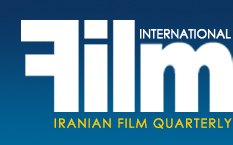|
FIPRESCI Critsics' Perspective on Iranian Independent Cinema (Part- Four)

Usman Ghafoor
Film Critic/Pakistan
How much do you know about Iranian culture? Do you know any Iranian artists out of the field of cinema?
- I do believe that a foreigner can always get to know the people of a country, their lifestyle, culture, traditions, and values through their cinema and films. It cannot be done by the media. Despite being a cinema journalist in Pakistan, we don’t hear or read about Iran in our history book, and most of the thing we know about it is through Iranian cinema and films. I can say that, despite Hollywood trying so hard to sell the “American Dream” to the world for so long, Iranian contemporary cinema has been so successful in drawing the attention of people all around the world to itself because of its beautiful stories and narrations.
I was lucky enough to attend a number of art galleries and film festivals at Iran Cultural Center in my hometown Lahore. These visits opened my eyes to the daily life, thoughts, and talents of the people of Iran. In the field of art, Persian hand-knotted carpets are extremely popular. The art of pottery and tiling, which is used in the architecture of many buildings in Pakistani cities, has its origins in Iran or the Persian culture. In my hometown, the shrine for “Sheikh Moses the Blacksmith” is one of the oldest buildings that has used Persian blue tiles in its architecture.
How did you become acquainted with Iranian Cinema? And when was the first time you watched an Iranian film?
- My first encounter with Iranian cinema goes back to the mid-2000s and Majid Majidi’s Children of Heaven. I was moved by the film's simplicity and its lack of any dramatic frills or embellishments in portraying life in a city in Iran, and particularly its child heroes. After watching Majid Majidi’s The Color of Paradise and Baran, Abbas Kiarostami’s The Wind Will Carry Us and Taste of Cherry, and Asghar Farhadi’s A Separation and The Salesman, I became a huge fan of Iranian cinema. I didn’t even care if the DVDs had English subtitles or not because it is impossible not to be influenced by the visual language of the films.
What do you think are the most important subject matters that Iranian independent filmmakers should work on?
- At first, I thought that Iranian cinema mainly tells simple and unpretentious stories about women and men who continue their daily lives in a patriarchal and conservative Iran, until I saw The Pig directed by Mani Haghighi, and was very surprised. Seeing this film and its delightful social satire changed my perception of Iranian cinema, Art in iran is under government supervision. Also, Kiarostami’s Close-up which is in fact a metastory, or his Ten which is a different filmmaking experience, and Mohammad Rasoulof’s There is No Evil which is a perception of the social and psychological consequences of execution. An interesting point is that films such as There Is No Evil, Farhadi’s A Hero, or Ghobadi’s A Time for Drunken Horses cannot be considered political or propagandistic films because they merely narrate the human condition caused by strict regulations.
What are the main factors for the success of Iranian cinema at a variety of film festivals in the world?
- The main reason can be strong and beautiful narrations of Iranian culture. Despite of censorship, Iranian filmmakers can tell the stories they want, and mostly they use symbolism and allegory to do so. Filmmakers such as Farhadi, Rasoulof, Majidi, and Kiarostami are author filmmakers. They tell indigenous stories relying on a personal aesthetic vision. It doesn’t seem like they have borrowed anything from the fashionable sentimentality of Hollywood or Bollywood!
It is a suitable time to say that I, as a huge fan of Iranian films and also as a consumer of the world cinema, would really appreciate it if these titles were more accessible like being uploaded on favorite and well-known platforms such as Netflix and with good translations and subtitles. As a result, Iranian cinema abroad can reach a much wider audience beyond its special audiences at film festivals.
Which cinematic movements in the world, whether before or after the Islamic Revolution, have influenced Iranian cinema?
- After the Revolution, at first, Iranian films were influenced by Italian Neorealism. For instance, we can taste Vittorio DeSica’s Bicycle Thieves in Majidi’s Children of Heaven. I’m not fully acquainted with the films before the revolution, therefore, I can’t give you any opinion on them.
[FIlm Magazine NO. 605]
|

